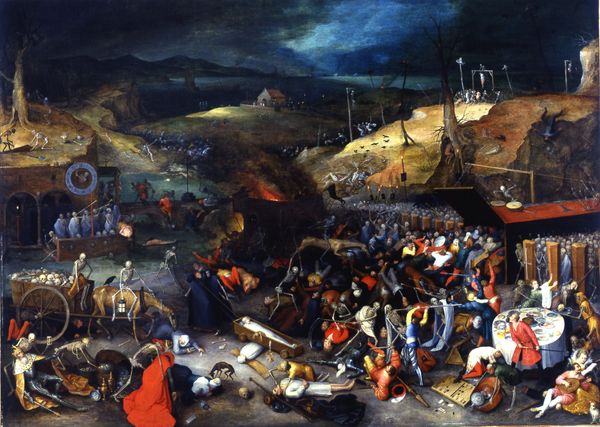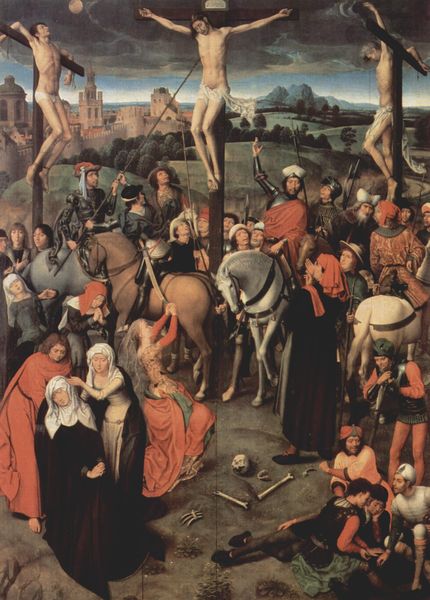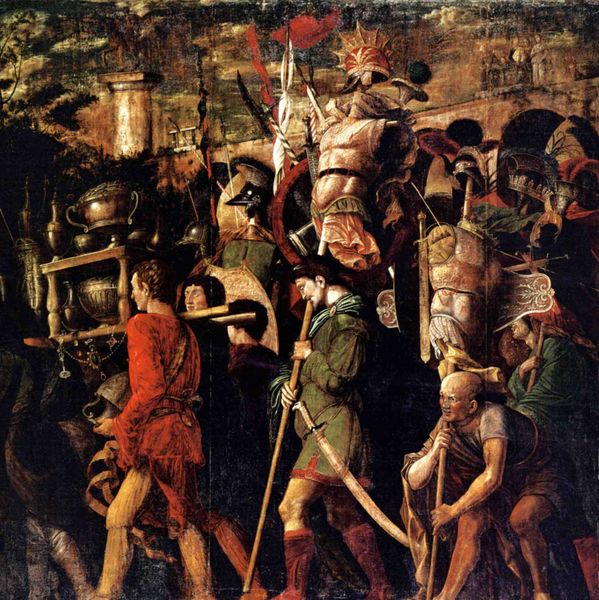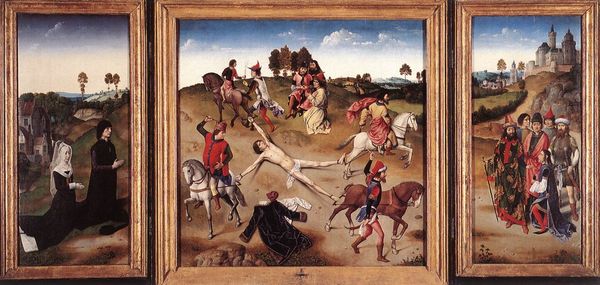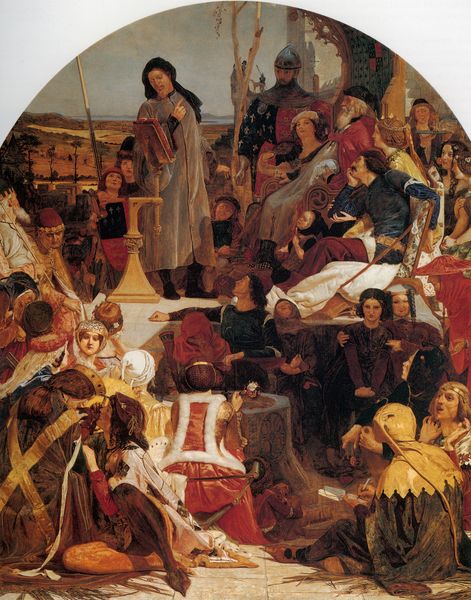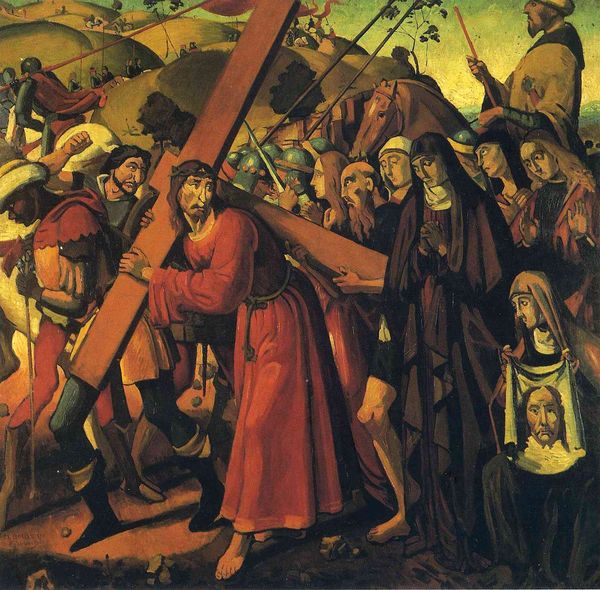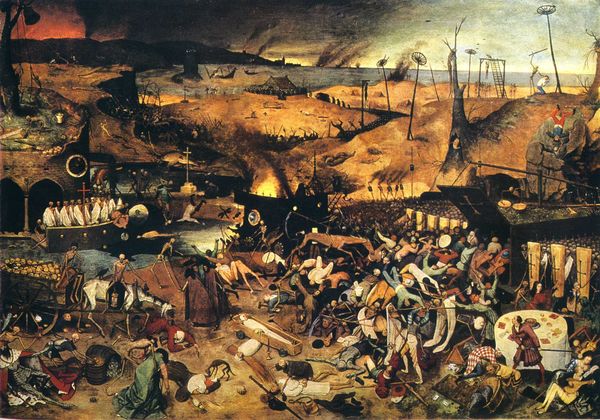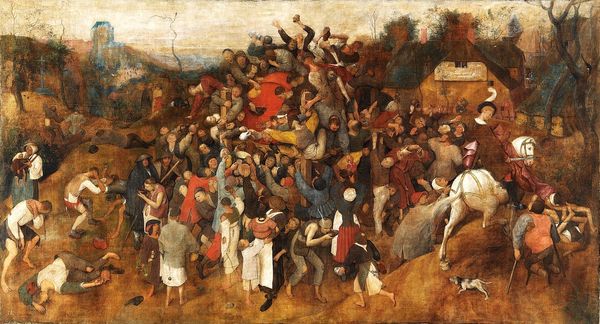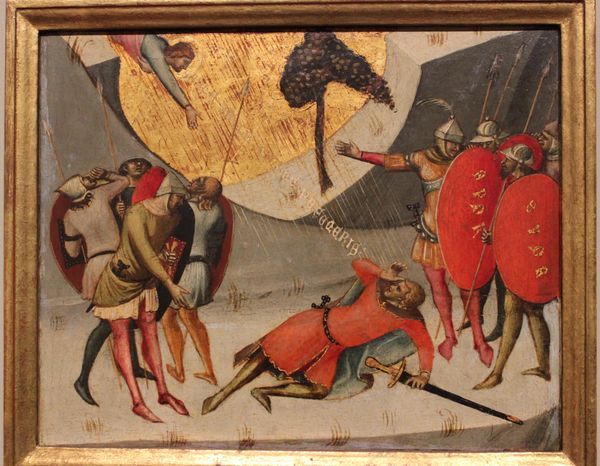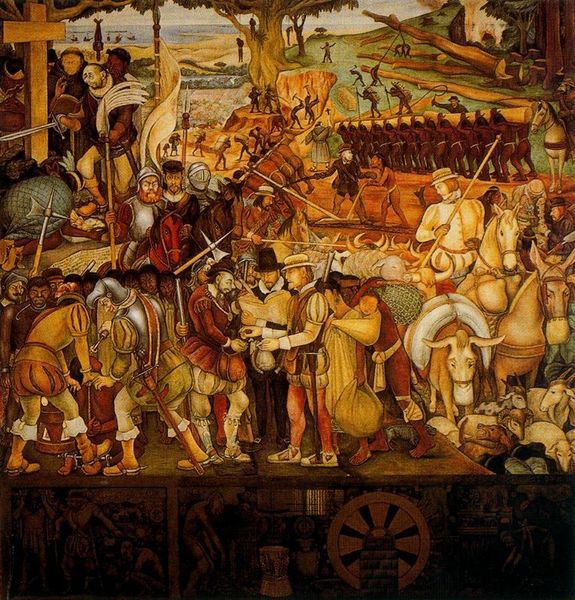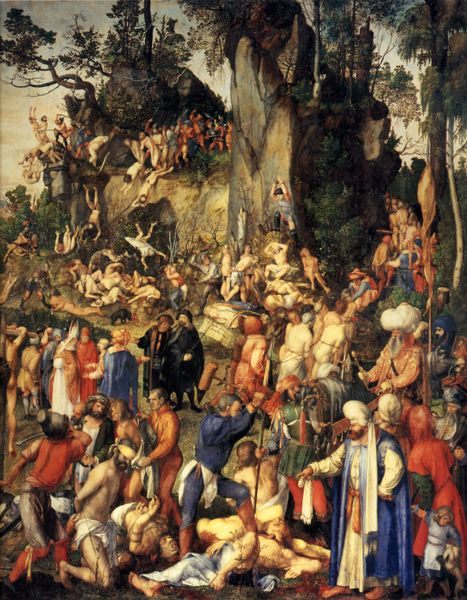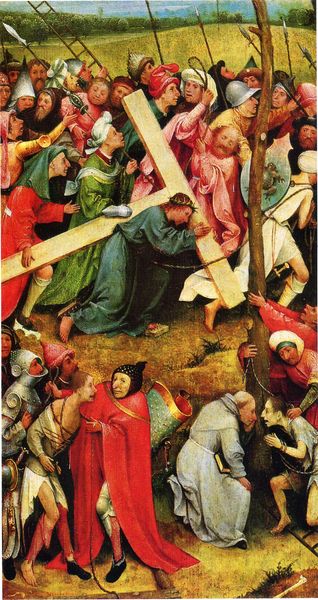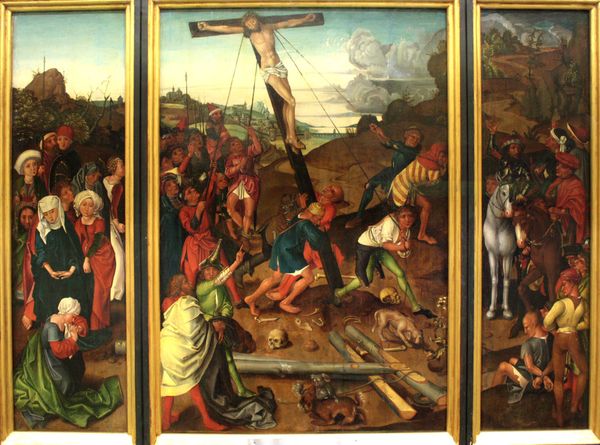
The Preparation of the Cross_ Christ Resting, Christ Being Nailed to the Cross, and Erection of the Cross c. 1510 - 1520
0:00
0:00
panel, oil-paint
#
portrait
#
panel
#
oil-paint
#
landscape
#
oil painting
#
jesus-christ
#
13_16th-century
#
crucifixion
#
history-painting
#
italian-renaissance
Dimensions: 101.9 x 159.3 x 0.8 cm
Copyright: Public Domain
Curator: The artwork before us is a panel painting executed in oil paints. Its title is “The Preparation of the Cross: Christ Resting, Christ Being Nailed to the Cross, and Erection of the Cross,” and it was created circa 1510-1520 by an anonymous artist. It is currently held in the collection of the Städel Museum. Editor: The emotional impact is quite heavy; even from a distance, you feel the density of figures, and all the energy concentrated into this scene of looming execution. There's something almost overwhelmingly tragic about the landscape's serenity in contrast. Curator: Indeed. The painting presents a panoramic view of the crucifixion of Jesus, dividing the narrative into distinct scenes across the composition. Note how this attempts to freeze multiple moments into a single panel to fully expose the spectacle. Editor: Looking closer, I see three crucified figures, with Christ centrally located; around them, there is a swirl of activity with the Roman guards. We’re invited to focus not just on Christ's suffering, but also on the diverse expressions and roles of those involved in the execution. What can be said about how that impacts this religious narrative? Curator: Consider the period. This painting would have been made in response to major political upheavals which is a critical thing to consider about Renaissance art. I'd even propose the sheer activity depicted can be contextualized by societal instability in 16th-century Europe, with shifts in religious authority due to the burgeoning Reformation. Editor: I can't help but look for how the artist portrayed individuals in their active involvement; their faces give away complicated sentiments, reflecting on their place and moral entanglement with Christ's execution. Perhaps we can read this art through a lens that focuses on the interplay of authority and moral ambiguity when dealing with issues related to faith, identity, and sacrifice? Curator: Yes, it certainly raises a challenge to those that benefit from institutional religious hierarchies, reflecting on accountability and complicity with worldly powers, something that has not ceased to become part of the artistic interpretation to date. Editor: Seeing it this way also opens the painting to broader discussion, where we grapple with complex moral, political, and even social realities associated with art's public engagement today. It's fascinating.
Comments
stadelmuseum about 2 years ago
⋮
This unusual combination of three Passion scenes in one painting invites the viewer to let his eye roam as he reflects on Christ’s suffering and meditates on the events that brought about salvation. Remarkably, the painting is divided stylistically into two parts: the foreground and middle ground correspond to mid-fifteenth-century representations of the subject in the manner of the Karlsruhe Passion, while the background resembles the Upper Rhenish painting style of around 1510/20. This panel was probably intended to complement – or imitate – existing older works.
Join the conversation
Join millions of artists and users on Artera today and experience the ultimate creative platform.
